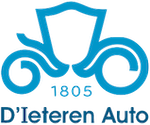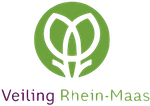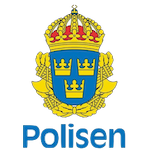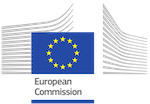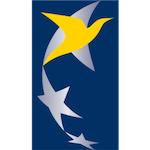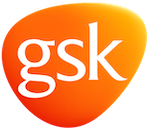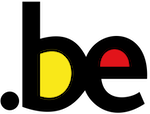ABOUT
SUMMARY
My name is Yves Vindevogel, a Python developer and teacher. I have a special interest in open source technology.
I am a highly skilled developer with a background of close to 30 years as consultant in ICT. That is, if you don't count my first programming experiences on a Commodore-64 when I was about 12. Started programming in the Basic world, moved to XML related environments and programming in Java, Javascript and Groovy. In 2019 I have made the switch to programming in Python.
After having worked as DevOps for several years, I decided to move back to the development side. Although I love working with Linux systems, I prefer writing real applications more.
20 Years after I first started teaching, I have picked up teaching evening school again at Syntra. I'm teaching Python, of course. I guide my students from launching their first hello_world.py until the end when I judge their final end-project. When my career was focused on Adobe products, I also got certified as an Adobe Certifier Instructor.
I have a strong affection for automation (builds and testing) and open source. I'm also interested in NoSQL databases, Docker, RabbitMQ and Redis.
I have a big interest in beer (not only just because I'm Belgian). I am zythologist (beer sommelier) and micro-brewer. I tend to talk about beer as passionate as I talk about Python coding.
I am a referee in Futsal. I lead matches on 3rd national level for men, 1st national level for women and all age categories of the national youth teams.
I am a former Belgian Air Cadet. I used to fly gliders when I was 16, but nowadays you only find me along the runway handling a Nikon camera with a big zoom lens.
I have a strong character and a strong will to develop quality solutions.
I was born in Oudenaarde, Belgium on December 31st, 1972. After having lived in several Belgian and European cities, including Cologne, Stockholm and Paris, I moved back to the city of my roots in 2022: Oudenaarde. I am blessed with one son, Niels.
EXPERT IN
-
PYTHON
99%
-
FUNCTIONAL AND OBJECT ORIENTED PROGRAMMING
99%
-
MODERN PYTHON FRAMEWORKS
90%
-
RELATIONAL DATABASES, SQL
90%
-
GROOVY, GRADLE
90%
-
JAVA, JAVASCRIPT
50%
-
XML, XSLT, XSD
95%
-
MICRO SERVICES, APIs, JSON, YAML
85%
-
LINUX
95%
-
GITLAB, GITHUB
95%
-
DOCKER
60%
-
ANSIBLE
85%
-
JENKINS, NEXUS
85%
-
DEVOPS METHODOLOGY
90%
-
AGILE METHODOLOGY
90%
PYTHON FRAMEWORKS
-
DJANGO
90%
-
WAGTAIL
70%
-
FASTAPI
85%
-
FLASK
70%
-
FALCON
70%
-
CHERRYPY
90%
-
MARSHMALLOW
85%
INTERESTED IN
The below technology is technology where I have put steps, but not always within a project. Projects with these new technologies are high on my wish-list for future projects.
BACKPACK TECHNOLOGY
In my career I worked with several technologies that I still master but don't use on a daily base anymore. I'm not taking any jobs in these technologies, but they remain useful on projects.
-
ADOBE LIVECYLE ES
100%
-
POSTGRESQL
90%
-
MS SQL SERVER
80%
-
ORACLE, MYSQL
50%
-
IBM URBANCODE
70%
-
AWX-TOWER, SATELLITE
50%
-
MS VISUAL BASIC
90%
-
MS WINDOWS (3.11 -> ...)
90%
-
MS WINDOWS SERVER (NT4 -> ...)
65%
-
MIDDLEWARE, QUEUEING
40%
-
JIRA, CONFLUENCE, REDMINE
60%
LANGUAGES
As a Belgian, more in particular being Flemish, I live in the center of Europe. Flemish people are known in general for their good knowledge of foreign languages. I speak and write the following languages listed below.
AVAILABILITY
At the moment, I am not open to new opportunities. I have a long-term contract at ArcelorMittal, Ghent. So unless you have an offer I can really not resist, it makes no sense contacting me.
For recruiters, check https://www.linkedin.com/in/yvesvindevogel/, which is my LinkedIn profile. If you don't see the green badge 'open to work', then normally I'm not interested in your project. But you can always try to convince me, of course.
However, if you have an open source project ongoing, and I use it, I may step into the project. I would also be glad to find people who are willing to work on open source projects I'm coding on.
If you need advise on Python projects, you can always contact me to develop your architecture, core functionality, ... You can also hire me as a Python teacher for short assignments.
NOT FOR ME
From experience, I know that I don't like to work in some roles. I will not consider taking up a position on for example the below jobs.
- Non-technical jobs: it's simply not me.
- Being a scrum master / product owner: I'm too technical.
- Only working as a system engineer: I love to develop for the backend, but keeping servers running is not my thing.
- Functional analyst / technical writer: I like to write code too much.
INTERNATIONAL JOBS
I have worked several years in different countries within Europe. At this moment however, I prefer to stay in Belgium due to the fact that I teach evening classes and my joy for being a referee. And I'm renovating my house.







